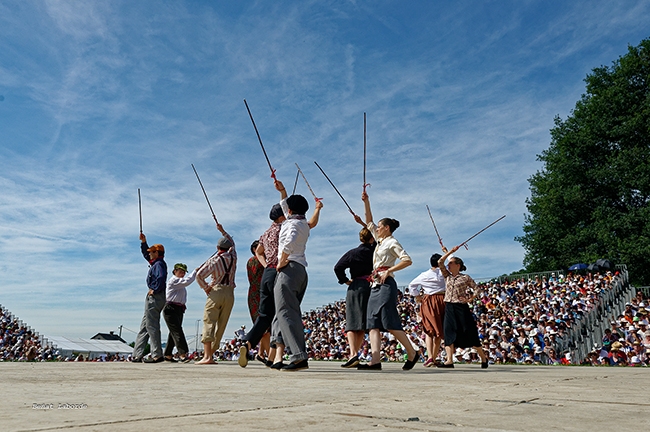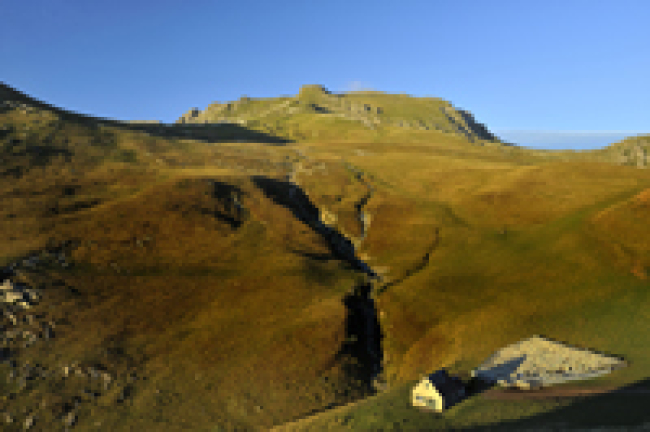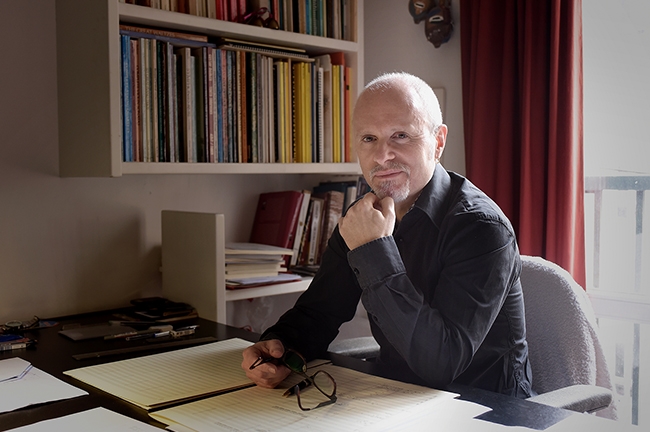The Festival d’Automne has always highlighted the links between tradition and the new. In bringing together on the same stage musicians from the Basque country, many of them amateurs, instrumentalists experienced in playing the music of Maurice Ravel and the Ensemble Instant Donné to perform a work composed by Ramon Lazkano based on a story about Maurice Ravel by Jean Echenoz, the Festival takes this approach further. The aim is for the audience to discover the hallmarks of Basque musical tradition, and therefore to better understand their influence on the Trio by Maurice Ravel, and experience how Basque born Lazkano’s Ravel-inspired work is a logical extension of this tradition.
“One Basque, you have a beret; two Basques, a game of pelota; and three Basques, a chorale”. That is a cliché, but in fact the Basque Country is famous for its singing, with music as a powerful cohesive force within the community. When they sing, they improvise as a bertsolari (a verse-maker), perform long stories as a koblakari or in otxote (choirs of eight male voices), or in choirs of any form.
Instrumental accompaniment is also part of the tradition and can be traced back to the three-hole pipes found in the Isturitz Oxocelhaya caves (Upper Paleolithic). The pipes, either txistu or silbote, are played with an accompanying tambourine or ttun-ttun as is the case in Soule. Musicians also play the gaita navarra (or dultzaina) originally from Northwest Africa, the alboka, the atabal, the muxukitarra (mouth harp), and develop finely-tuned skills on the accordion.
Countless musicologists have strived to identify the originality of Basque music: quarter tones? A timbre linked to this language of mysterious origin? The aksak, asymmetric, quintuple beat known as zortziko? Ravel uses this for the theme in his Trio. He even wrote about it in a letter to Father Donostia upon returning from a trip to the mountains of Soule, thus drawing together music and nature.
The landscape of the Basque country has forged an art and a culture in their image. Ubiquitous throughout the Pyrenees, the Basque language, Euskara, brings together the three northern and four southern provinces – Zazpiak bat (“the seven [are] one”). The unsettling heights, steep precipices, gorges, canyons and rivers of Soule shaped daily life in the area.
This is evidenced by the unevenly roofed houses, the churches with triple steeples, the dams and bridges, and the inhabitants whose songs of farewell are only heard when they know the person will return. One can feel the beating heart of a “Basque soul” – with its multiple facets, shaped by mutual support, solidarity and a obstinate desire to keep the ‘ancient language’ alive. This is the requirement for a culture to withstand the test of time.
The makila is the quintessential symbol of the Basque people. It is a carved walking stick of medlar, used to mark time and space, also in the performances of pastorales, of which literary and linguistic content captivate euskalduns (Basque speakers). The makila is also a symbol of the inner conflict between the fixed form – the formality of traditions belonging to the community that handed them down throughout history (aintzina means “future” and “past”: the past is in fact in front of us) – and very contemporary issues relating to socio-political concerns of the here and now. Hence, the pastorale shifts from being a mere quirk of folklore to a grand political act, where people discuss the shared history they wish to defend, and in a fleeting moment, breathe life into an art form that is theirs alone.
Maurice Ravel developed a very deep bond with Basque traditions. His mother taught him the language. The songs, the landscape, and his passion for the Basque country permeate his work. It was in Ciboure in 1914 that he wrote the Trio in A minor, a work built around the zortziko rhythm that can be found in other works by Ravel, though never as clearly as here. The 5/8 rythm (1+2+2) is extended into 8/8 and provides the theme of the first movement. Ravel also had planned a work that was to bear the title Zazpiak bat, in homage to the unity of the seven Basque provinces.
In Soule (Xiberoa), the creative power within the tradition is a necessity for every person.
– here, everybody is born a dancer. Dance troupes are where old repertoires are handed down, where dancers are pushed beyond their limits all the while working as a collective whole, and where ultimately, traditions are reworked and reinvented. The works of Ramon Lazkano (born 1968, San Sebastián) are presented here to form a three sided ‘portrait’ with performances by soloists, quartets, and ensembles. The fact that all of his works have Basque titles shows how language and culture are intertwined; the homages to Jorge Oteiza and poet-singer Mikel Laboa serve the same purpose. Ravel (Scenes), the first part of the opera Ravel, is based on Jean Echenoz’s eponymous novel and is written for two singers and fifteen musicians.
After Denis Laborde



